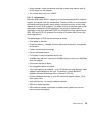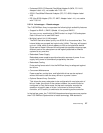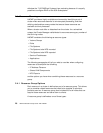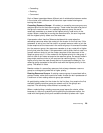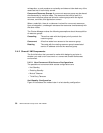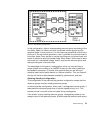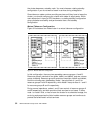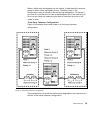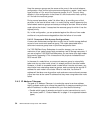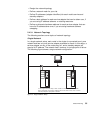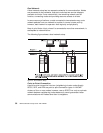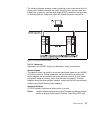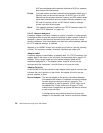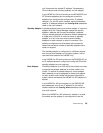
32 IBM Certification Study Guide AIX HACMP
the cluster becomes a standby node. You must choose a rotating standby
configuration if you do not want a break in service during reintegration.
Since takeover nodes continue providing services until they have to leave the
cluster, you should configure your cluster with nodes of equal power. While
more expensive in terms of CPU hardware, a rotating standby configuration
gives you better availability and performance than a hot-standby
configuration.
Mutual Takeover Configuration
Figure 3 illustrates a two node cluster in a mutual takeover configuration.
Figure 3. Mutual Takeover Configuration
In this configuration, there are two cascading resource groups: A and B.
Resource group A consists of two disks, hdisk1 and hdisk3, and one volume
group, sharedvg. Resource group B consists of two disks, hdisk2 and hdisk4,
and one volume group, databasevg. Node 1 has priorities of 1 and 2 for
resource groups A and B respectively, while Node 2 has priorities of 1 and 2
for resource groups B and A respectively.
During normal operations, nodes 1 and 2 have control of resource groups A
and B respectively, and both provide critical services to end users. If either
node 1 or node 2 fails, or has to leave the cluster for a scheduled outage, the
surviving node acquires the failed node’s resource groups and continues to
provide the failed node’s critical services.




